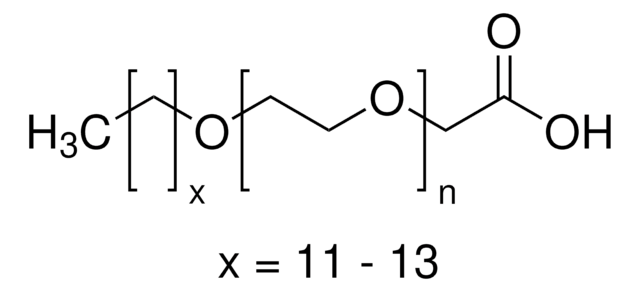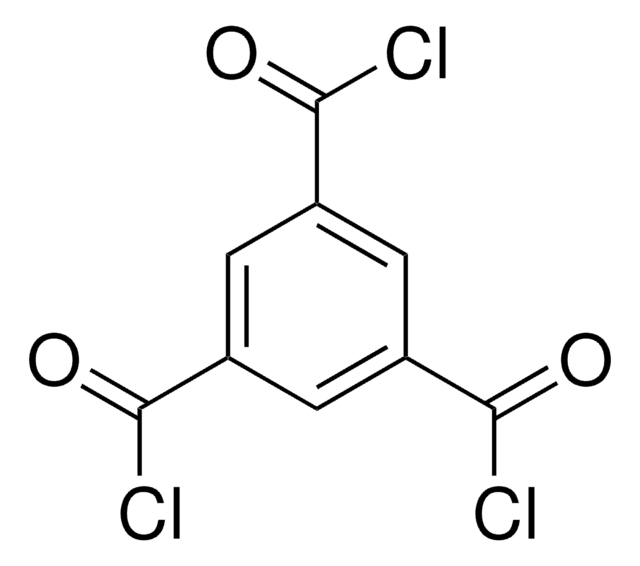473197
Poly(ethylene glycol) 4-nonylphenyl 3-sulfopropyl ether potassium salt
Synonyme(s) :
Polyethylene glycol
About This Item
Produits recommandés
Forme
viscous liquid
Niveau de qualité
Indice de réfraction
n20/D 1.473
pb
81 °C (lit.)
Densité
1 g/mL at 25 °C (lit.)
Chaîne SMILES
[K+].[S](=O)(=O)([O-])CCCOCCOCCOCCOCCOCCOCCOCCOCCOCCOCCOCCOCCOCCOCCOCCOCCOCCOCCOCCOCCOc1ccc(cc1)CCCCCCCCC
InChI
1S/C58H110O24S.K/c1-2-3-4-5-6-7-8-10-57-11-13-58(14-12-57)82-55-54-81-53-52-80-51-50-79-49-48-78-47-46-77-45-44-76-43-42-75-41-40-74-39-38-73-37-36-72-35-34-71-33-32-70-31-30-69-29-28-68-27-26-67-25-24-66-23-22-65-21-20-64-19-18-63-17-16-62-15-9-56-83(59,
Clé InChI
RCHNVNBUJMZZIL-UHFFFAOYSA-M
Vous recherchez des produits similaires ? Visite Guide de comparaison des produits
Catégories apparentées
Description générale
Application
Poly(ethylene glycol) 4-nonylphenyl 3-sulfopropyl ether potassium salt was also demonstrated to be effective for protecting thermostable DNA polymerase during amplification reactions conducted at a temperature ranging from about 40° C to greater than 100° C.
DNA polymerases, such as Taq, do become inactive over time at the high temperatures utilized in thermal cycling reactions such as polymerase chain reaction (PCR). It has been discovered that thermostable DNA polymerases could be protected from such heat inactivation by contacting the polymerase with poly(ethylene glycol) 4-nonylphenyl 3-sulfopropyl ether potassium salt during a thermal cycling process, and improve the specificity of amplification.
Forme physique
Informations légales
Code de la classe de stockage
10 - Combustible liquids
Classe de danger pour l'eau (WGK)
WGK 3
Point d'éclair (°F)
No data available
Point d'éclair (°C)
No data available
Équipement de protection individuelle
Eyeshields, Gloves
Faites votre choix parmi les versions les plus récentes :
Déjà en possession de ce produit ?
Retrouvez la documentation relative aux produits que vous avez récemment achetés dans la Bibliothèque de documents.
Notre équipe de scientifiques dispose d'une expérience dans tous les secteurs de la recherche, notamment en sciences de la vie, science des matériaux, synthèse chimique, chromatographie, analyse et dans de nombreux autres domaines..
Contacter notre Service technique![(1S,4S)-(−)-2-Boc-2,5-diazabicyclo[2.2.1]heptane 95%](/deepweb/assets/sigmaaldrich/product/structures/401/063/1eb3be94-6385-4815-8b42-ff76c097cc27/640/1eb3be94-6385-4815-8b42-ff76c097cc27.png)








